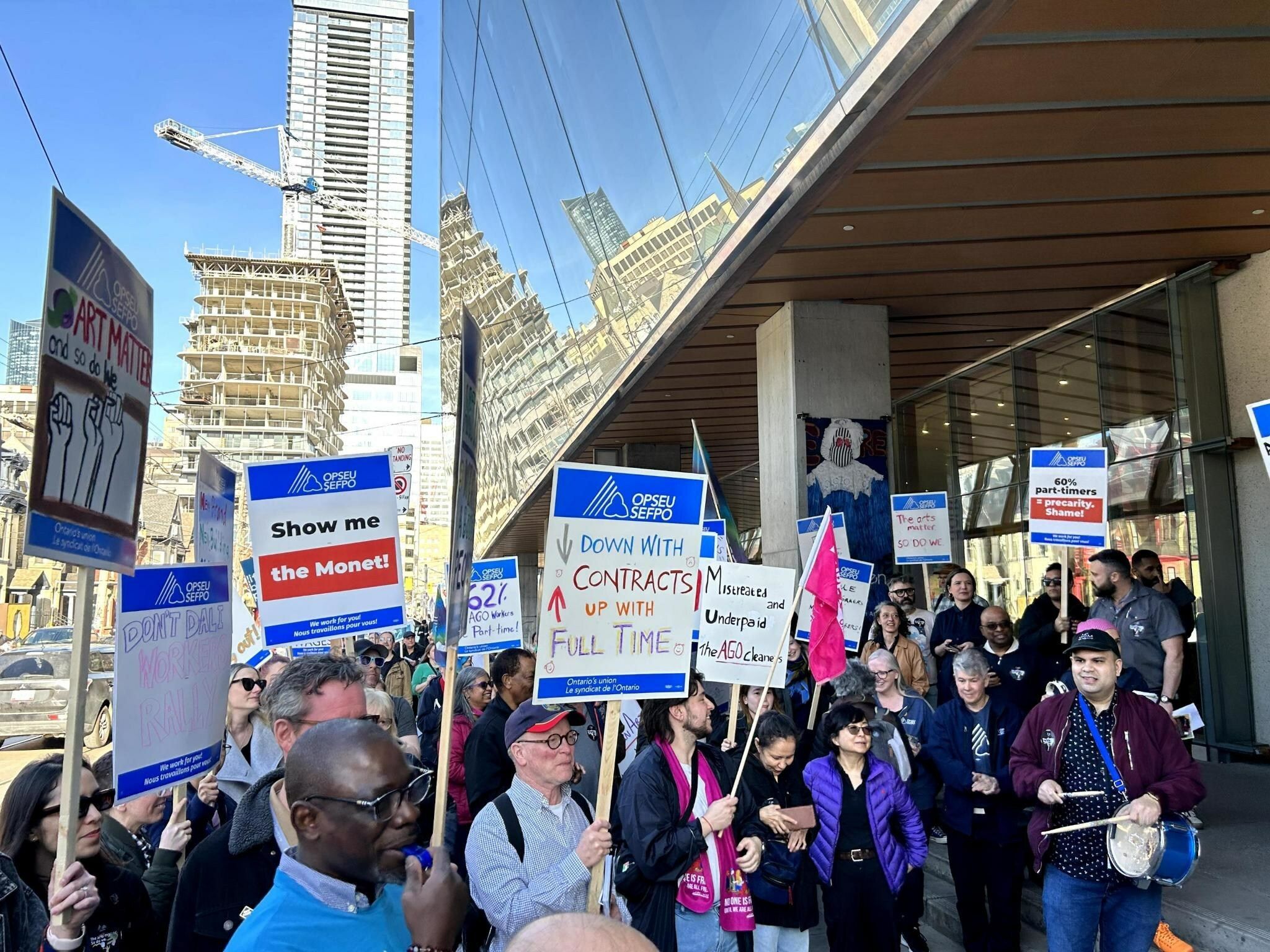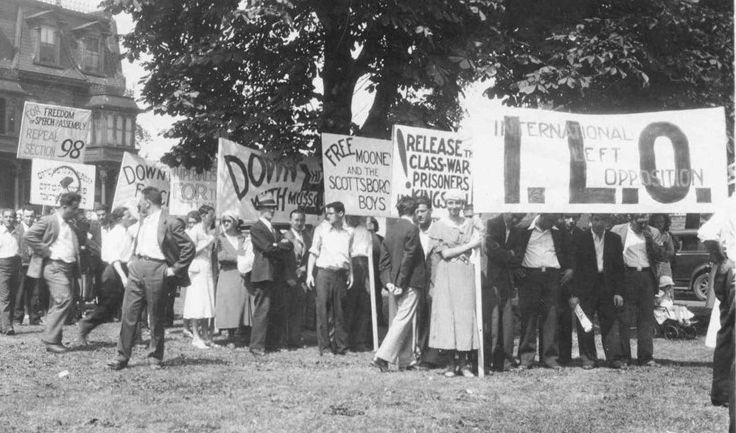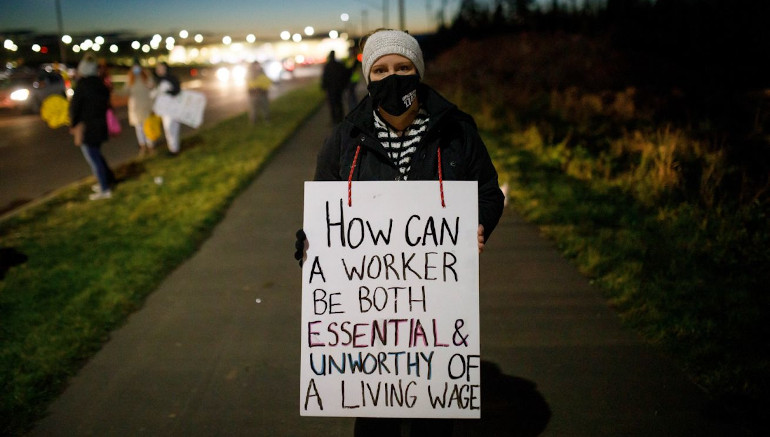Ontario Art Gallery workers on strike
“Show me the Monet,” was one of the many witty slogans of the striking workers of the Art Gallery of Ontario.
The gallery in Toronto, is one of the largest art museums in North America, attracting approximately one million visitors annually. It boasts a collection of more than 120,000 works of art ranging from cutting-edge contemporary art to significant works by Indigenous and Canadian artists and European masterpieces. The AGO prides itself on presenting wide-ranging exhibitions and programs, including solo exhibitions, and acquisitions of works by diverse and underrepresented artists from around the world. Many of the AGO workers are artists themselves, contributing to the city’s cultural fabric.
Yet the AGO management cannot pride itself on being a fair employer. After months of negotiations, union members with OPSEU Local 535 voted to reject the gallery’s latest contract offer, saying it does not address wage increases in a time of the rising cost of living, protections for part-time workers and the contracting out of work. Over 400 AGO workers went on strike from Tuesday, March 26. The most common placard slogan was “The arts matter. So do we!” This is the first strike in the 30-year history of the local. The author of this article visited the picket line on the second day of the strike and spoke to two union activists including one from the bargaining committee. They were able to provide useful information regarding the different categories of workers and the contrast in pay between workers and the CEO.
A wide range of employees from assistant curators to conservators, archivists, food and hospitality staff, researchers, instructors, carpenters, installers, electricians and visitor service staff are among those walking the picket line. As is far too common, the food services and cleaning staff are the lowest paid. The average wage of an AGO worker is $48,000 per year. Over 60 percent of the workforce is part-time and their average pay is only $34,380 per year, not enough to pay Toronto’s expensive rents. Meanwhile, the CEO, Stephan Jost, gets an annual salary of $406,341 which is supplemented by “consulting fees” from the AGO Foundation to the tune of $391,940. One of the bargaining issues is the result of Bill 124, the 2019 law from the Doug Ford government that capped public sector wage increases at one percent for three years. The courts decided that Bill 124 was illegal, but Ford is appealing the decision. In the meantime, some including teachers and nurses have gone to arbitrators and got significant retroactive awards. The AGO union bargaining committee is only seeking one year of back pay, yet the employer is saying no to even that.
The AGO is funded in part by the Ontario Ministry of Tourism, Culture and Sport with additional operating support from the City of Toronto and the Canada Council for the Arts. Then there are contributions from AGO members, donors and “private-sector partners,” otherwise described by one of the activists as being some of the wealthiest Canadians. Governance is based on a Board of Trustees, most members coming from the business sector. As one of the activists stated, the AGO is run like a corporate entity.
In an article on the CBC website, Mark Thornberry, an event setup coordinator who has worked with the museum for 15 years said “We anticipate hopefully that the employer sees our strength and that it starts an internal conversation with them to maybe rethink how they’ve been treating their employees.” Socialist Alternative would add that, in addition to the employer seeing the workers’ strength, it would be good for management to see the full force of the organized Toronto labour movement showing its strength by making their presence felt on the union picket lines.




